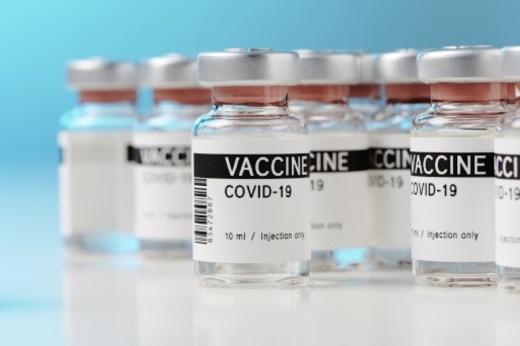On Dec. 2, Texas Gov. Greg Abbott announced the Centers for Disease Control and Prevention had allotted 1.4 million doses of the Pfizer-BioNTech COVID-19 vaccine to the state of Texas pending emergency authorization by the Food and Drug Administration. The first doses are anticipated to arrive as early as the week of Dec. 14.
According to the FDA, the department is currently reviewing emergency use authorization applications for COVID-19 vaccines created by Pfizer-BioNTech and Moderna. Both vaccines utilize messenger RNA to promote the production of antibodies against the novel coronavirus.
The department is slated to meet Dec. 10 to discuss Pfizer’s application and again Dec. 17 to discuss Moderna’s application before deciding if the vaccines will be granted approval for emergency use.
Once approved, the vaccines are anticipated to be distributed in phases, with priority given to health care workers, front-line workers and citizens who are at a greater risk of complications or death if they contract the virus, according to Abbott’s distribution plan.
“We're not sure if everyone is going to get allocated [a] vaccine in that very first initial round," said Gentrea Hendrickson, the public health emergency preparedness coordinator for the Comal County Public Health Department. "It's looking like it's going to sort of be phased out over time with high-risk areas getting the vaccine first in Texas.”
Ahead of the FDA meetings, health care providers and public health officials in Comal County have been working together to enroll providers in the Vaccine Allocation and Ordering System, a system run by the Texas Department of State Health Services, Hendrickson said.
To enroll in the system and order vaccines, a provider must agree to store and distribute the vaccine in accordance with CDC guidelines and disclose information about its cold-storage capabilities, Hendrickson said.
“For both of the vaccines, the storage of the vaccine and the use of it is pretty complicated, especially for Pfizer,” Hendrickson said. “You kind of have to plan down to, you know, little five-minute increments, to make sure that ... you're meeting those cold chain requirements and you're not compromising the vaccine.”
The Pfizer vaccine has a recommended storage temperature of negative 94 degrees Fahrenheit and can be thawed and stored at 28.4-17.6 degrees Fahrenheit for up to five days before use, according to the Pfizer website.
More than 30 providers in Comal County have already enrolled in the online system, according to a statement from the county, including Resolute Health Hospital and Christus Santa Rosa Hospital in New Braunfels.
Hendrickson said once the vaccine is approved by the FDA, health care providers and front-line workers will be among the first to have access to the vaccine, though the department will likely specify the vaccine cannot be mandated due to its status as an investigational drug.
The vaccine would not be made widely available to the general public until phase three of the distribution plan, Hendrickson said, and the DSHS is likely to create a database for residents to search for vaccination sites near their homes.
“Right now [the DSHS] has an online dashboard where you can search your ZIP code or address, and it will have a map with all of the COVID[-19] testing sites available near you,” Hendrickson said. “I expect something similar with the vaccine where you can search your location and find local providers who are giving out the vaccine.”
Both the Pfizer and Moderna vaccines require two doses, with 21 days between the first and second dose of the Pfizer vaccine and 28 days between the doses of Moderna’s vaccine.
Providers in Texas will be able to track patients’ vaccination history through the ImmTrac2 system, Hendrickson said, which will help providers make sure that patients receive both doses. Hendrickson anticipates county providers will have access to vaccines by late December.
County health authorities and enrolled providers will meet Dec. 9 to further develop storage and distribution plans before the FDA’s Dec. 10 meeting.





